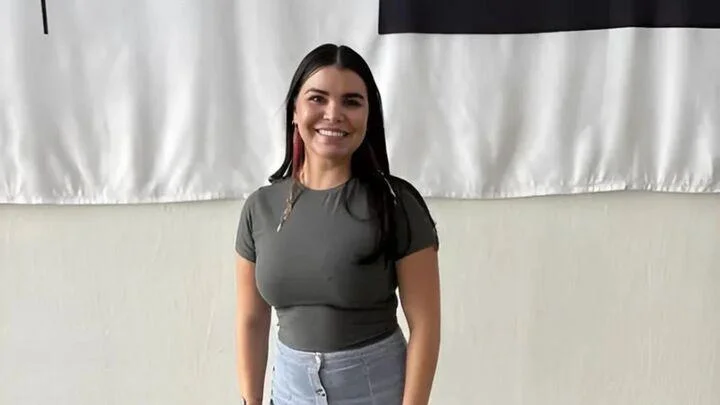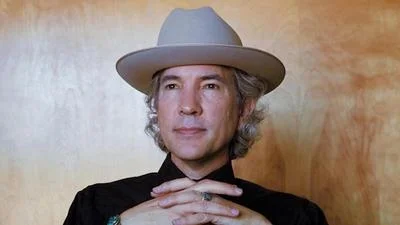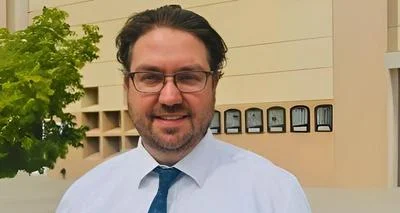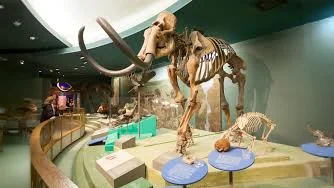Walking into 516 ARTS on Central Ave in Albuquerque, New Mexico I immediately encounter a large musical score on the wall. Printed with ink on polyester, Pulitzer-winning composer Raven Chacon’s American Ledger (No. 1) covers over 12 feet of space. It’s a large installment.
On the top of the score are what appear to be mountains and stars adjacent to a whole note. The next line/image has quarter notes and pause notations, encased in home-like motifs. The next segment is an outline of a city, presumably Albuquerque, then more lines and notation, with the final line a series of symbols and musical notations: a star, a cross, and geometric shapes along with the letters “D.C,” standing for Da Capo in musical notation, meaning from the beginning or to start again.
American Ledger (No. 1) is part of the exhibit Soundings: An Exhibition in Five Parts.
Curated by Candice Hopkins and Dylan Robinson, Soundings: An Exhibition in Five Parts features commissioned scores, performances, videos, sculptures and sound by Indigenous and other artists.
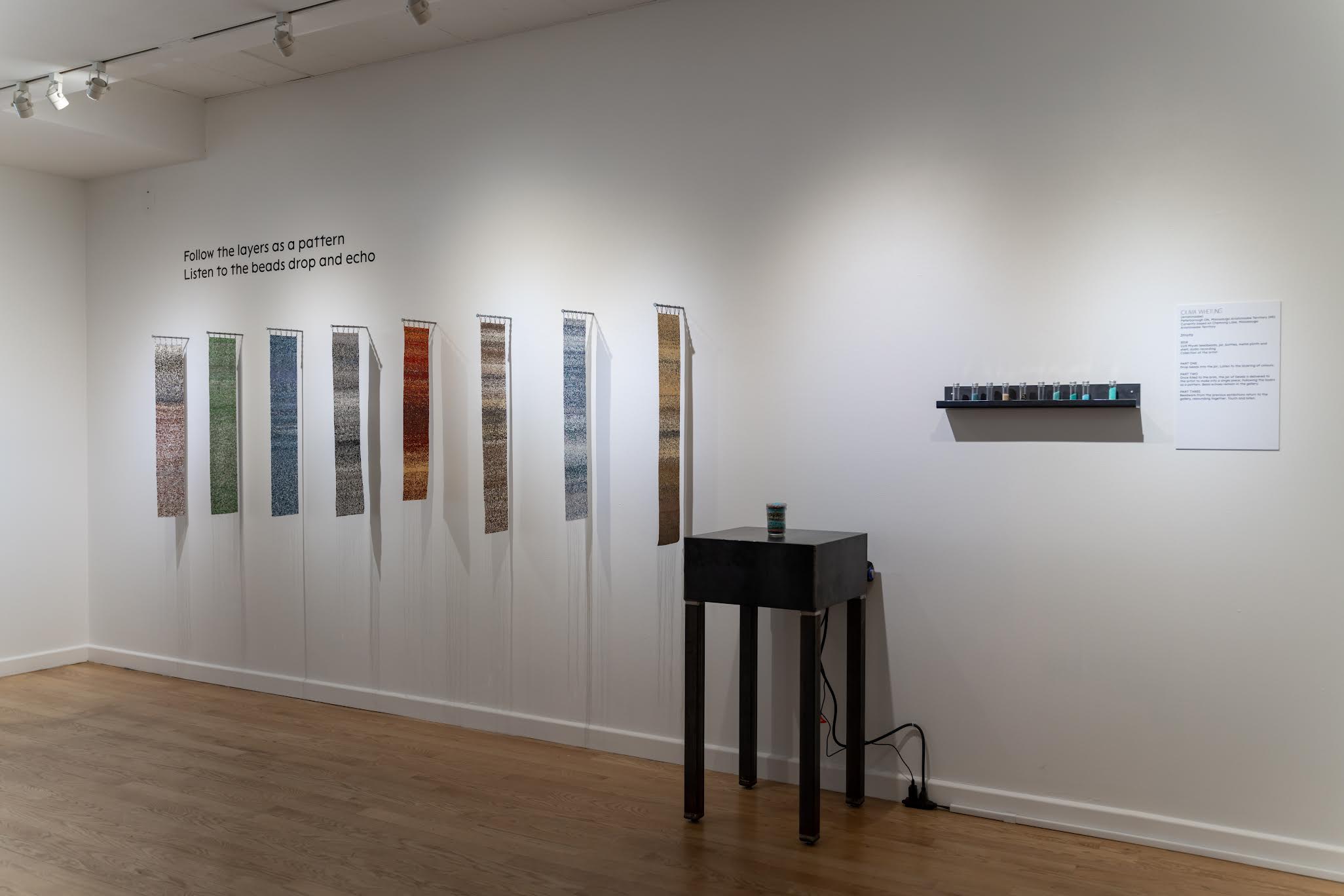
Photo: Daniel Ulibarri
As the program description states, the exhibit unfolds “In a sequence of five parts,” with “beadwork, videos, objects, graphic notation, historical belongings, and written instructions. During the exhibition, these scores are activated at specific moments by musicians, dancers, performers and members of the public gradually filling the gallery and surrounding public spaces with sound and action.”
It’s a dazzling description.
To help get a greater grasp on the exhibit, I meet Tucson native, painter, and 516 ARTS curator Olivia Amaya Ortiz to expound upon the fascinating exhibit, on display through October 4th, 2025 in both Albuquerque and at the Poeh Cultural Center and Museum north of Santa Fe.
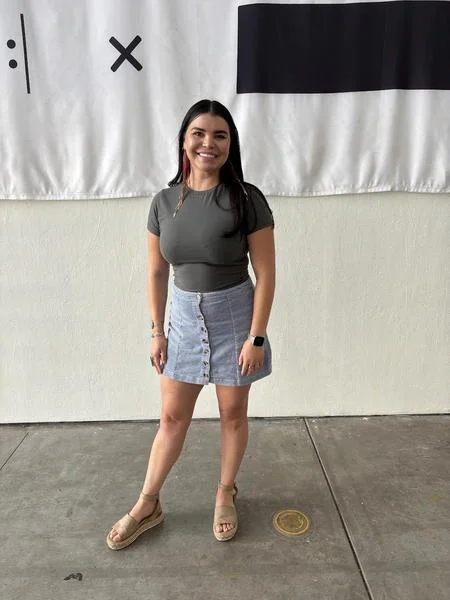 Olivia Amaya Ortiz. Photo: Brian C. Nixon
Olivia Amaya Ortiz. Photo: Brian C. Nixon
Ortiz tells me that Soundings: An Exhibition in Five Parts details “how a score can be a tool and a call for decolonization.”
It’s a lofty subject.
As impressive as the activist side of the exhibit is, I’m captivated by the thoughtfulness of the works; how they explore community and the artistic process.
Case in example: Oliva Whetung’s Strata. Ortiz explains that Whetung used a three-part sequence to make her art. In Part 1, the viewer drops beads into a jar provided by Whetung. Once the jar is full, Ortiz mails the beads back to Whetung (Pt. 2). In Part 3, Whetung creates a new banner of beadwork, representing the previous exhibit. The new banner of beads will be displayed at the next exhibit space.
“It’s an example of the flowing nature of the exhibit,” Ortiz states. “It showcases how art changes and morphs as it progresses from place to place.”
After walking through several other works, Ortiz takes me upstairs to view Dó-gah by Greg Staats. Printed with Indian tobacco, one finds the words “Dó-gah” repeated on a board. Dó-gah means “I don’t know.”
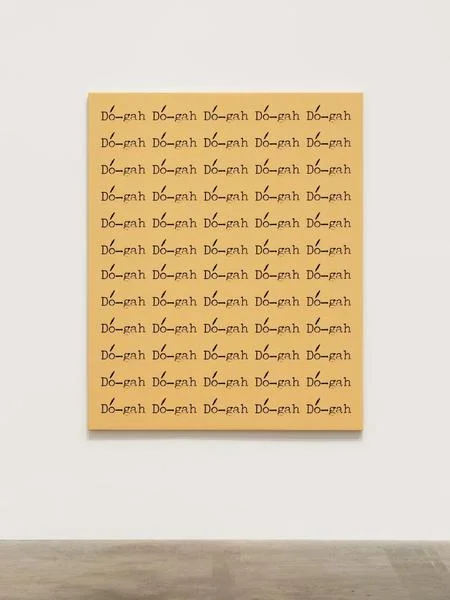 Dó-gah by Greg Staats. Photo: 516 ARTS
Dó-gah by Greg Staats. Photo: 516 ARTS
Ortiz explains that many well-meaning people pry into culturally sensitive Indigenous rituals and concepts. So, instead of explaining them, it’s easier for some Indigenous people to say, “I don’t know” to protect the history and culture of the traditions. Accompanying the artwork is a poem-score written by Staats to explain the process.
Albuquerque is the second US city that hosted the exhibit, with most of the showings occurring in Canada, so it was a treat to explore the marvelous work.
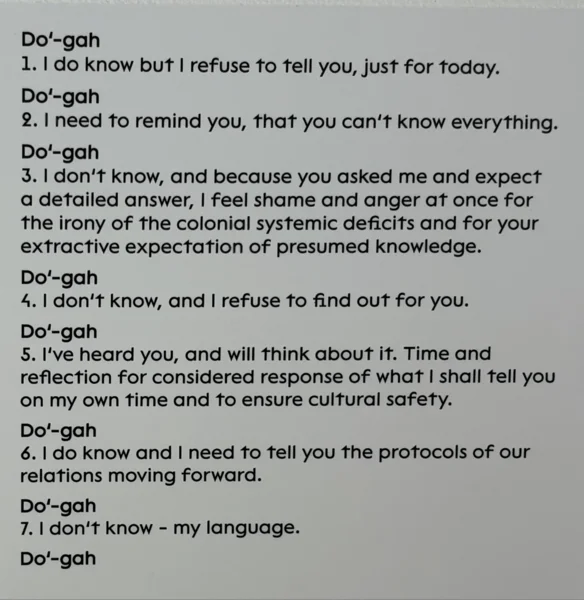 Dó-gah poem/score by Greg Staats. Photo: Brian C. Nixon
Dó-gah poem/score by Greg Staats. Photo: Brian C. Nixon
On my way out, I take a copy of Ogimaa Mikana’s Never Struck, a booklet written in the Anishinaabe language. I learn from the work that the words in the booklet “articulate…resistance and adaption. They convey a confidence that our language and epistemologies have sustained us before, during, and long after colonization.”
It’s a profound, summative way to end my time at 516 ARTS.
If one were to go to the Poeh Cultural Center and Museum, they’d encounter a similar score to Raven Chacon’s. Created by Tania Willard, Surrounded/Surrounding’s is a graphic score that includes flowers over staff lines, with a map-like image designating a 4/8-time signature. On the graphic map words such as “the sky,” “breath,” and “ground” are found. To the left and right of the score are musical notations such as pause symbols and quarter notes. Below the score is another staff line with flowers.
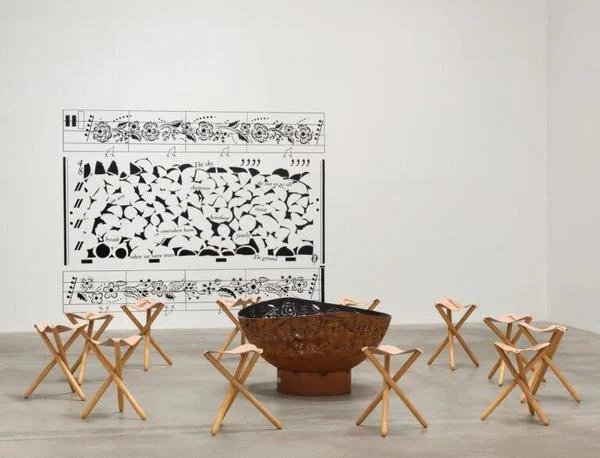 Surrounded/Surrounding by Tania Willard. Photo: 516 ARTS
Surrounded/Surrounding by Tania Willard. Photo: 516 ARTS
On the floor in front of Surrounded/Surrounding are 12 chairs, encompassing a fire pit with etchings of more flowers. To perform the piece, one must be familiar with the symbolism, but as a visual work of art it conveys splendor (nature), strength (fire), and community (chairs and music).
And that’s how I’d summarize Soundings: An Exhibition in Five Parts: thoughtfully rendered, beautiful work that showcases fortitude, creativity, community, and resilience; giving voice and vision to Indigenous virtues.
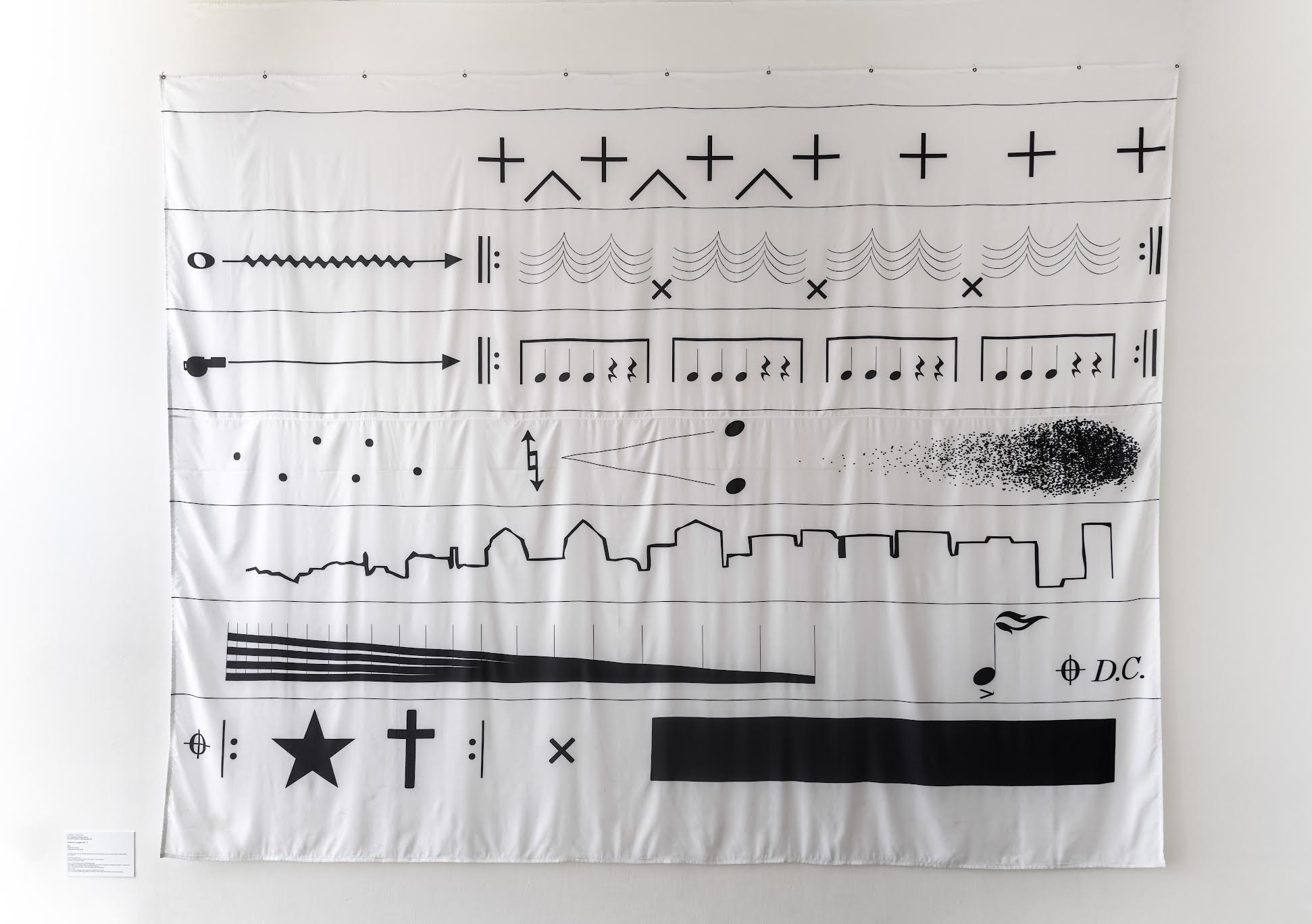
Photo: Daniel Ulibarri
Brian C. Nixon, Ph.D., is Chief Academic Officer and professor at Veritas International University in Albuquerque. As a writer, musician, and artist, his interests surround the philosophical transcendentals: truth, beauty, and goodness. You can contact Brian via his Bandcamp email address: https://briancharlesnixon.bandcamp.com
